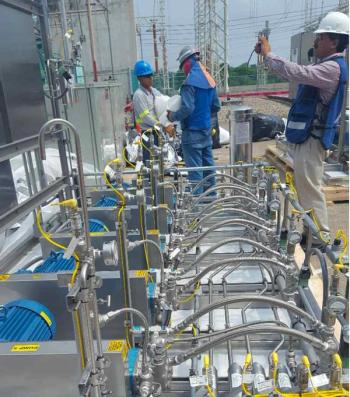
Monitoring shaft end seals in condensing turbines
Most steam turbine vendors use a vacuum gland condenser system to ensure that air enters the last section of the steam seal, thus preventing steam from entering the bearing bracket and contaminating the oil system. Monitoring the vacuum of the system will allow determination of necessary maintenance (eductor nozzle change).
(The function of a typical seal is to prevent steam from escaping to the atmosphere)
Failure to monitor gland condenser vacuum on special purpose (un-spared) steam turbines has resulted in gross contamination of the oil systems and reduced bearing life. In many installations, vacuum gauges in the steam seal system are either missing or broken.
The key to successful shaft and seal operation is to continuously maintain a slight vacuum in the last chamber of the seal. By maintaining a vacuum at this location, atmospheric air will enter the seal thus assuring that steam (moisture) will not enter the bearing bracket and contaminate the oil system. The labyrinth type shaft end seals safely direct the expansion vapor to a defined location and draw a buffer gas (air) to prevent expansion vapor contact with the bearings.
The function of a typical seal is to prevent steam from escaping to the atmosphere along the shaft and entering the bearing housing. Special purpose turbines usually employ a low vacuum to buffer atmospheric end labyrinth with air. General purpose turbines usually do not employ a vacuum system and do not totally prevent moisture from entering bearing housing.
Condition monitoring of the system vacuum is essential to maintaining moisture-free lubrication oil. Many a turbine bearing has failed because of poor seal system preventive and predictive maintenance practices. ‘Think system’ and check all components of the seal system frequently. Condition monitor steam seals on large turbines by trending gland condenser vacuum and taking corrective action when vacuum is less than -5 inches water column to positively prevent contamination of the oil system.
This best practice has been used since the 1990s to prevent excessive contamination of the oil system (greater than 220 ppm of water). When the eductors in the steam seal system are properly monitored and maintained, steam seal MTBFs will exceed 500 months.
Newsletter
Power your knowledge with the latest in turbine technology, engineering advances, and energy solutions—subscribe to Turbomachinery International today.





